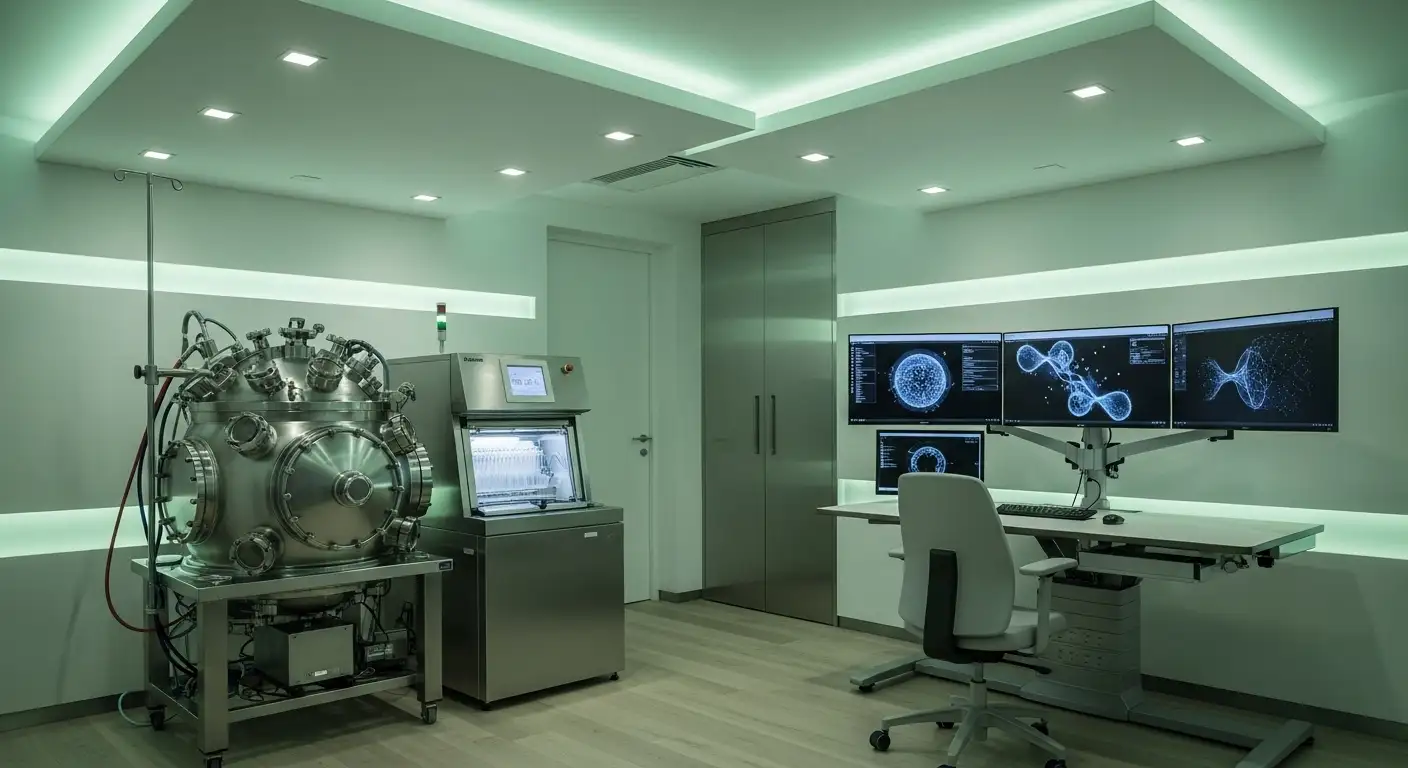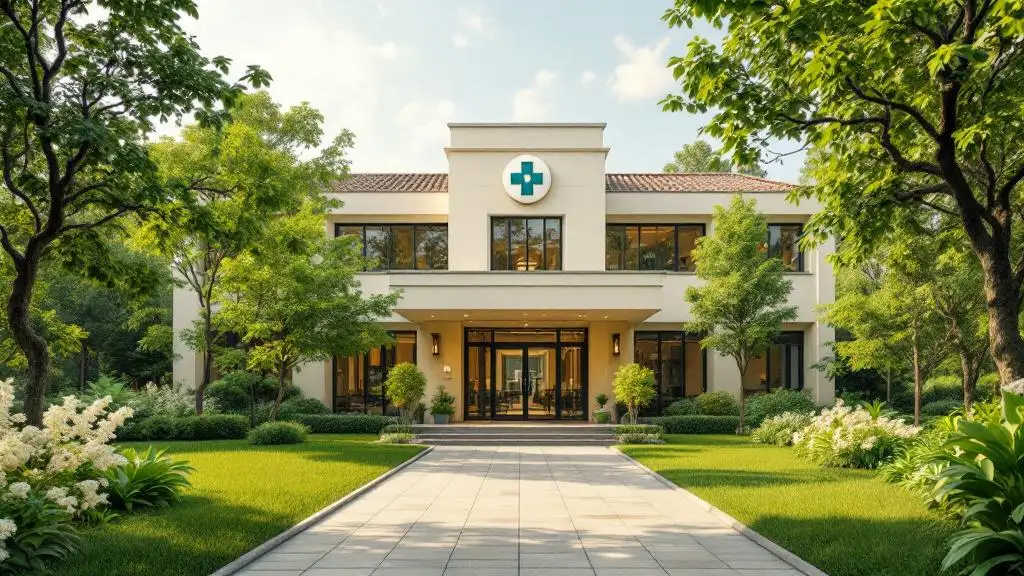Understanding IVF stimulation protocols
Decoding the Complexities of IVF Ovarian Stimulation: Tailoring Protocols for Optimal Fertility Outcomes
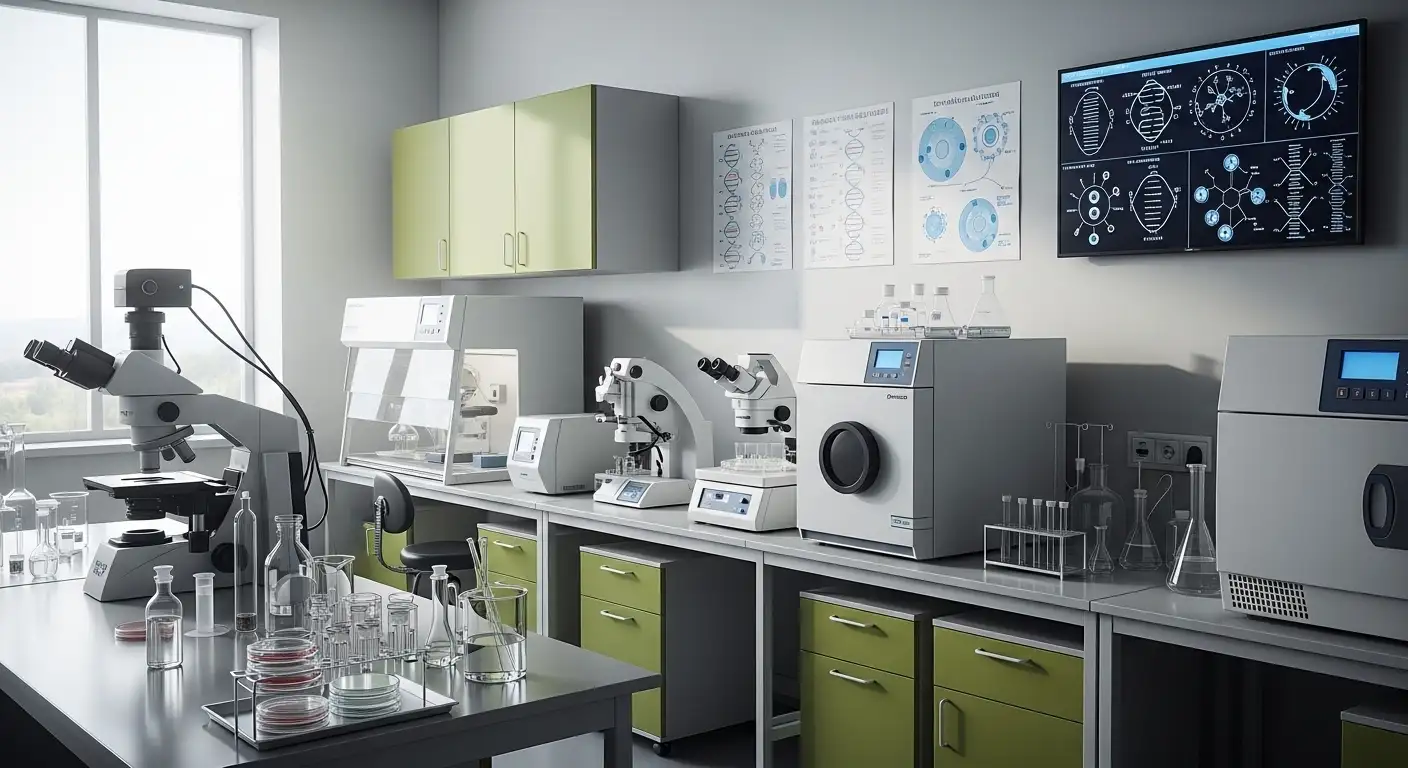
The Role of Ovarian Stimulation in IVF Success
In vitro fertilization (IVF) has revolutionized reproductive medicine, offering hope to individuals and couples facing infertility. Central to IVF success is the process of ovarian stimulation—using medication protocols to prepare and retrieve multiple eggs for fertilization. With a plethora of stimulation protocols available, understanding their differences, benefits, and risks is vital to optimizing outcomes and personalizing treatment. This article explores the intricacies of IVF stimulation protocols, illuminating how they support reproductive health and improve pregnancy chances.
Causes of Infertility and the Role of Medical Treatments
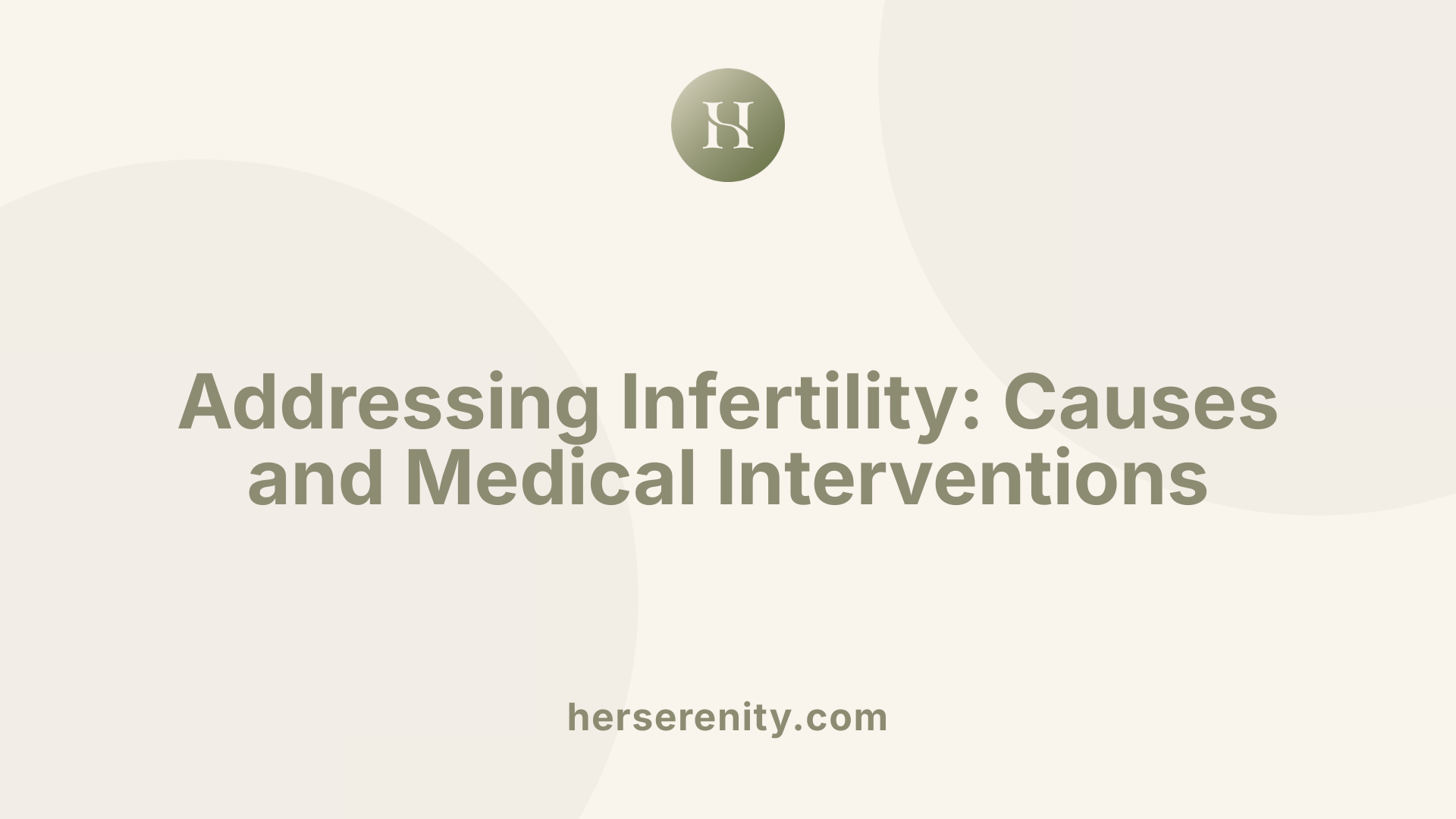
What are the main causes of infertility that medical treatments aim to address?
Infertility arises from various factors affecting both women and men. In women, common causes include ovulation disorders such as polycystic ovary syndrome (PCOS) and hormonal imbalances that prevent regular egg release. Structural issues like fallopian tube damage, fibroids, or uterine abnormalities also play a significant role. Endometriosis and pelvic infections or adhesions can further impair fertility.
For men, problems such as low sperm count, poor sperm motility, and abnormal sperm morphology are major contributors to infertility. Sometimes, couples face unexplained infertility where standard evaluations do not reveal a clear cause, and assisted reproductive technologies (ART) like in vitro fertilization (IVF) become the primary treatment approach.
How do medical treatments target these underlying issues?
Medical interventions are designed to address specific causes of infertility:
- Ovulation induction: Medications such as clomiphene citrate or letrozole stimulate ovulation in women with hormonal disruptions.
- Surgical correction: Procedures can repair structural abnormalities like blocked fallopian tubes or remove fibroids.
- Hormonal therapies: Treatments regulate hormonal imbalances to improve reproductive function.
- Assisted reproductive technologies: IVF and related protocols overcome problems such as tubal blockage or male factor infertility by fertilizing eggs outside the body.
Recent advances include tailored ovarian stimulation protocols that optimize egg retrieval according to individual ovarian reserve and response, balancing medication doses to improve outcomes while reducing risks.
Why is personalized treatment important?
No single approach fits all patients. Factors such as age, ovarian reserve, sperm quality, prior treatment history, and underlying diagnosis influence treatment choice. Personalized plans enable providers to select appropriate stimulation protocols, medication dosages, and interventions that maximize success rates and minimize side effects and costs. Tailoring therapy supports better clinical outcomes, especially in challenging cases like poor ovarian responders or those at risk of ovarian hyperstimulation syndrome.
Understanding the complex causes of infertility and leveraging personalized medical treatments help couples achieve optimal chances of conception while minimizing physical and emotional burdens.
Overview of Common Fertility Treatments Beyond IVF
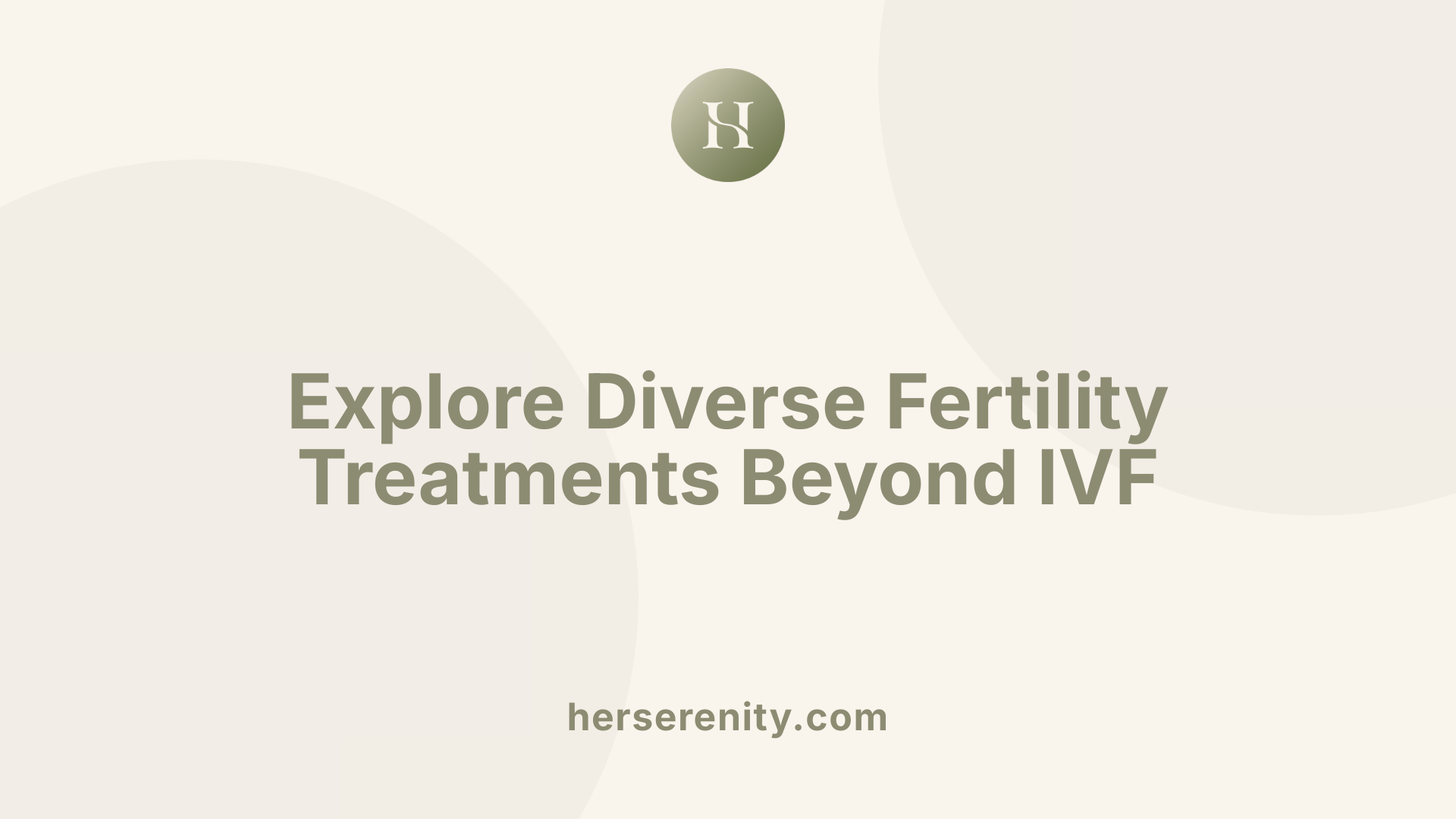
What are the common medical treatments available to assist with conception?
Fertility treatments encompass a range of medical options designed to help individuals and couples conceive. One of the primary approaches involves fertility medications that stimulate ovulation. These include clomifene and tamoxifen, which encourage the release of eggs, metformin used particularly when insulin resistance is involved, gonadotrophins that directly stimulate the ovaries, and dopamine agonists targeting hormonal imbalances.
Surgical Interventions
Surgery may be necessary to correct physical problems affecting fertility. Procedures often focus on repairing blocked or damaged fallopian tubes, removing scar tissue, or addressing conditions such as endometriosis and uterine fibroids. Laparoscopic surgery is a common minimally invasive method utilized to improve reproductive health and can significantly enhance the chances of natural conception.
Assisted Reproductive Technologies (ART)
When medications or surgery are insufficient, assisted reproductive technologies provide additional options. Intrauterine insemination (IUI) involves directly placing sperm into the uterus around the time of ovulation to increase fertilization chances. In vitro fertilization (IVF) is more complex and entails fertilizing eggs outside the body followed by transfer of embryos into the uterus.
Other options include the use of donor eggs or sperm and surrogacy, particularly useful when one partner has significant fertility challenges or for same-sex couples.
Other Supportive Treatments
Supportive approaches such as lifestyle modifications, counseling for emotional support, and nutritional supplements can also play a vital role in fertility treatment. Consulting a fertility specialist ensures personalized care tailored to the specific cause of infertility, increasing the likelihood of a successful pregnancy.
| Treatment Type | Description | Typical Use Case |
|---|---|---|
| Fertility Medications | Drugs stimulating ovulation or correcting hormones | Ovulation disorders, hormonal imbalance |
| Surgical Interventions | Repairing reproductive structures | Tubal blockage, endometriosis, fibroids |
| Assisted Reproductive Technologies | IUI, IVF, donor gametes, surrogacy | Severe infertility, failure of other treatments |
| Supportive Treatments | Lifestyle, counseling, supplements | Complementary to medical or surgical treatment |
How Assisted Reproductive Technologies Facilitate Conception

How do assisted reproductive technologies (ART) help individuals and couples conceive?
Assisted reproductive technologies (ART) are medical procedures designed to aid individuals and couples facing infertility. The core idea is to manually manage eggs, sperm, or embryos outside the body to overcome different fertility challenges.
The most widely used ART method is in vitro fertilization (IVF). This process starts with ovarian stimulation to produce multiple eggs instead of just one natural egg per cycle. Medications such as gonadotropins encourage the growth of several follicles. Depending on the patient’s profile, different stimulation protocols are chosen to optimize egg yield while minimizing risks like ovarian hyperstimulation syndrome.
Once the eggs mature, they are surgically retrieved and fertilized with sperm in a lab. Sometimes, advanced techniques like intracytoplasmic sperm injection (ICSI) are used to inject a single sperm directly into the egg, especially in cases of male infertility. After fertilization, the embryos develop in culture for several days before healthy embryos are selected and transferred into the uterus.
Beyond fertilization and embryo transfer, ART also includes genetic screening methods, notably preimplantation genetic testing (PGT). PGT identifies embryos free from certain genetic diseases or chromosomal abnormalities, increasing the likelihood of a successful pregnancy and a healthy baby.
ART can bypass physical or physiological barriers such as blocked fallopian tubes or severely reduced sperm count. It also offers solutions for age-related fertility decline by allowing for embryo freezing and later transfer.
This comprehensive approach enables many individuals and couples to conceive when traditional methods cannot succeed, providing hope and options in reproductive medicine.
Fundamentals of IVF Ovarian Stimulation Protocols
What are the goals of ovarian stimulation?
The main goal of ovarian stimulation in IVF is to retrieve an optimal number of mature eggs, typically between 8 and 15. This balance aims to maximize pregnancy success rates while minimizing risks such as ovarian hyperstimulation syndrome (OHSS). Successful stimulation allows for multiple eggs to be collected, increasing the chances of fertilization and embryo development for transfer or freezing.
Which medications are commonly used in ovarian stimulation?
Ovarian stimulation protocols employ various medications including:
- Gonadotropins: These include follicle-stimulating hormone (FSH) products such as Gonal-F, Follistim, Bravelle, and Menopur, which directly stimulate the ovaries to produce multiple follicles.
- GnRH agonists: Drugs like Lupron, which initially stimulate then suppress the pituitary gland to control ovulation timing.
- GnRH antagonists: Medications such as Ganirelix or Cetrotide that prevent premature ovulation by quickly suppressing gonadotropin release.
- Human chorionic gonadotropin (HCG): Used for triggering final oocyte maturation around the time of egg retrieval.
How is monitoring done during ovarian stimulation?
Monitoring is critical and involves serial ultrasounds to measure follicle size and count, often enhanced by advanced 3D ultrasound technology. Blood tests are done to monitor estradiol hormone levels, with peak levels before HCG injection typically ranging from 1000 to 4000 pg/ml. This ongoing assessment helps adjust medication doses and timing to optimize follicle development and reduce risks.
When is the timing of egg retrieval scheduled?
Egg retrieval is carefully timed approximately 34 to 35 hours after HCG administration, just before ovulation occurs naturally. This timing ensures that eggs are mature yet not released prematurely. A minimum of about 3-4 mature follicles is needed for a reasonable chance of success, with retrieval aiming to collect these eggs before ovulation happens.
These fundamental concepts form the backbone of effective ovarian stimulation in IVF, informing protocol choices to match individual patient needs and optimize outcomes.
Comparing GnRH Agonist and Antagonist Protocols
What is the mechanism of GnRH agonists and antagonists?
GnRH agonists work by initially stimulating and then suppressing the pituitary gland's secretion of gonadotropins, leading to controlled and sustained ovarian stimulation. In contrast, GnRH antagonists immediately block gonadotropin release, providing a quicker suppression of ovulation. This fundamental difference affects treatment length and hormone levels during IVF cycles.
How do treatment duration and drug usage differ?
GnRH agonist protocols are typically longer and require more gonadotropin usage. The long protocol can last several weeks and is associated with higher medication doses, which increases the cost and patient burden. Meanwhile, GnRH antagonist protocols are shorter, usually lasting around 7 to 12 days, and require less gonadotropin, offering a more streamlined approach.
What about egg yield and pregnancy rates?
The GnRH agonist long protocol is known for producing a higher number of retrieved and mature oocytes, which can enhance cumulative pregnancy rates. This method remains the traditional gold standard, especially for patients who respond well. On the other hand, antagonist protocols typically result in fewer eggs retrieved but still maintain reasonable pregnancy rates. This makes antagonists a viable alternative, especially for specific patient profiles.
How do the protocols compare regarding the risk of ovarian hyperstimulation syndrome (OHSS)?
A significant advantage of the GnRH antagonist protocol is its ability to lower estrogen levels on the day of HCG trigger and decrease the total number of oocytes, which reduces the risk of OHSS. Additionally, using a GnRH agonist trigger for final oocyte maturation further minimizes OHSS risk compared to traditional HCG triggers. Conversely, the agonist protocol's longer stimulation and increased gonadotropin dosages raise the likelihood of OHSS, necessitating close monitoring.
In summary, GnRH agonist protocols offer higher egg yields and potential pregnancy benefits but with longer treatment and higher OHSS risk. GnRH antagonist protocols provide shorter, less intensive cycles with a safety advantage against OHSS, making them suitable for patients at higher risk.
Minimal and Mild Stimulation Protocols: A Cost-Effective Alternative

What medications are commonly used in minimal stimulation protocols?
Minimal stimulation protocols often incorporate clomiphene citrate (CC) or letrozole alongside low doses of gonadotropins. These oral agents help stimulate follicular development with fewer injections, reducing both the treatment burden and medication costs.
How do treatment duration and medication dosages compare to traditional protocols?
These protocols typically involve shorter treatment durations and lower gonadotropin dosages than conventional long GnRH agonist protocols. Minimal stimulation aims to retrieve fewer than eight oocytes, using gonadotropin doses generally less than or equal to 150 IU per day, which is substantially lower than doses used in aggressive stimulation.
Which patient profiles benefit most from minimal stimulation?
Patients with poor ovarian reserve or advanced maternal age particularly benefit from these protocols. Reduced gonadotropin use and shorter treatment cycles not only lessen financial costs but also minimize physical and emotional stress. This approach also suits those seeking a milder treatment experience without compromising treatment outcomes.
How do pregnancy and embryo transfer rates compare with conventional protocols?
Studies indicate that pregnancy and embryo transfer rates with minimal stimulation protocols using CC and letrozole are comparable to those achieved with GnRH agonist protocols. While the number of retrieved oocytes may be lower, the overall clinical pregnancy rates per cycle remain similar, making minimal stimulation a cost-effective and patient-friendly alternative in appropriate populations.
Personalizing IVF Protocols Based on Patient Characteristics

How Do Patient Response Categories Influence Protocol Choice?
IVF protocol selection heavily depends on categorizing patients based on their ovarian response: high, intermediate, and poor responders. High responders are often at risk of ovarian hyperstimulation syndrome (OHSS), so protocols like the GnRH antagonist are preferred due to a shorter treatment course and lower estrogen levels. Poor responders, characterized by low ovarian reserve, often benefit from mild or minimal stimulation protocols involving clomiphene citrate or letrozole combined with low-dose gonadotropins, reducing drug usage and treatment costs.
Why Is Age and Ovarian Reserve Important?
Age and ovarian reserve markers such as Anti-Müllerian Hormone (AMH) levels and antral follicle count play a central role in tailoring stimulation protocols. Younger patients with good ovarian reserve may be suitable for conventional long GnRH agonist protocols to maximize oocyte yield, potentially improving pregnancy rates. Conversely, older patients or those with diminished reserve often undergo mild stimulation or minimal stimulation protocols to avoid excessive gonadotropin use and reduce physical and financial burden.
How Do BMI and Previous IVF Outcomes Affect Protocol Selection?
Body mass index (BMI) and past IVF cycle results influence protocol choice. Higher BMI may require adjusted gonadotropin doses or alternative protocols to optimize outcomes. Additionally, previous cycle responses guide clinicians in modifying protocols. For example, poor embryo quality or low oocyte yield in prior cycles might prompt a switch from antagonist to long agonist protocol or the addition of adjuvants such as estrogen priming or growth hormone, although evidence on these is preliminary.
What is the Rationale Behind Protocol Personalization?
Personalized IVF protocols aim to balance maximizing pregnancy chances against minimizing risks such as OHSS and treatment burden. Conventional long agonist protocols, while potentially yielding more mature oocytes, involve longer duration and higher gonadotropin doses, increasing cost and discomfort. Mild or minimal stimulation protocols offer a safer, more cost-effective approach with comparable cumulative pregnancy rates, particularly appropriate for poor responders or older women. Thus, careful assessment of individual patient characteristics ensures optimal IVF outcomes while considering safety and economic factors.
Balancing Success Rates and Risks in Stimulation
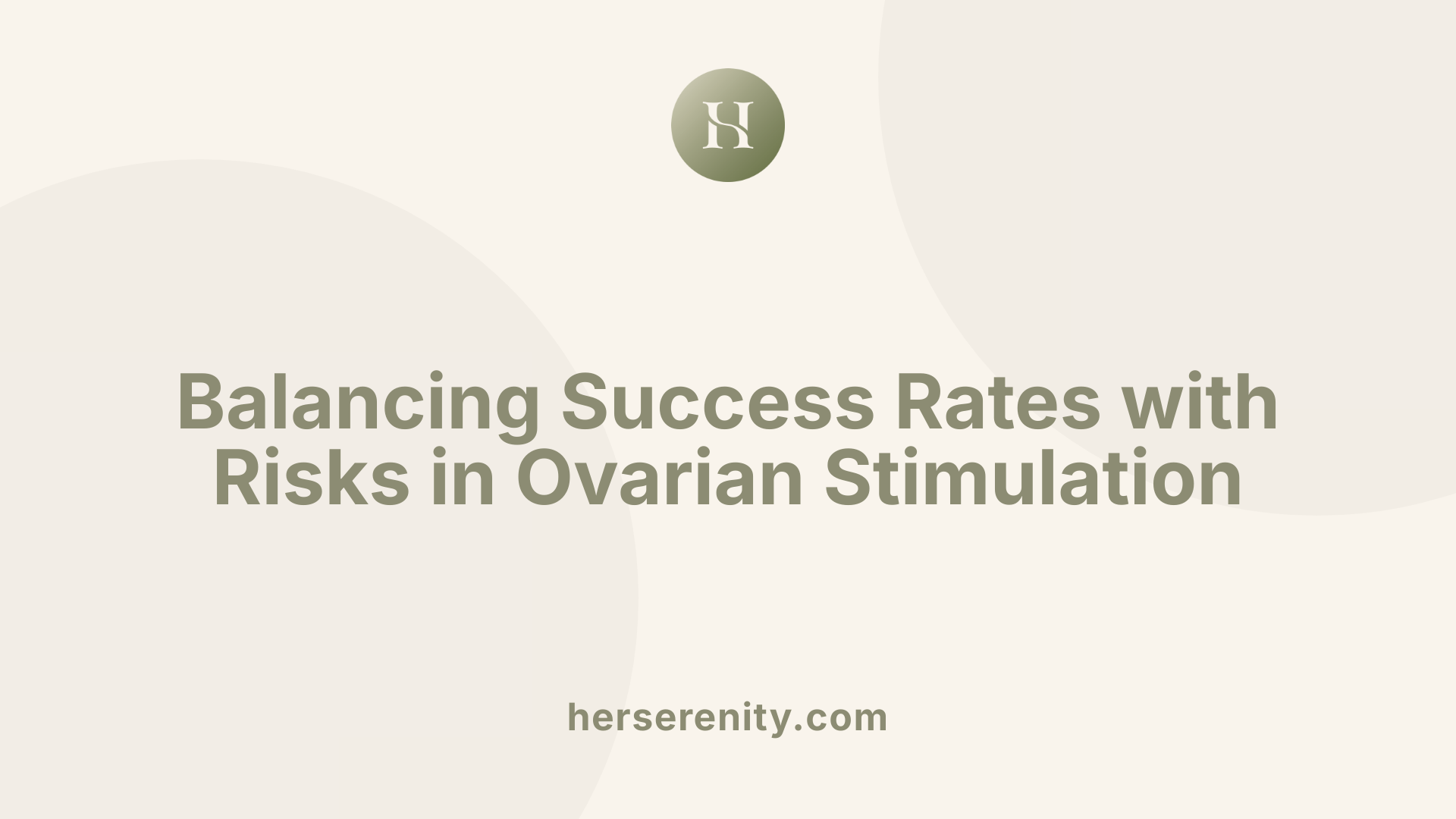
What risks and success rates are associated with fertility treatments?
Fertility treatments like IVF offer promising success rates, typically between 40% and 60% per cycle for women under 35. However, success rates decline with age due to factors such as egg quality. Many elements, including embryo health and infertility cause, influence outcomes, making them highly individual.
How many mature eggs should be aimed for during stimulation?
Successful ovarian stimulation aims to retrieve roughly 8 to 15 mature eggs. This range balances maximizing pregnancy potential without greatly increasing risks. Retrieving this number allows for enough embryos for transfer and freezing, improving chances over multiple cycles.
What are the risks associated with ovarian stimulation?
The primary risk is ovarian hyperstimulation syndrome (OHSS), a potentially serious condition caused by excessive ovarian response. High doses of gonadotropins and prolonged stimulation can increase this risk. Other concerns include increased physical and emotional burden, and higher treatment costs linked to intensive protocols.
What benefits and downsides do conventional and mild stimulation protocols offer?
Conventional protocols generally involve higher gonadotropin doses and longer treatments, leading to more eggs and potentially higher pregnancy rates. However, they pose greater risk for OHSS, higher costs, and more patient discomfort.
Mild stimulation uses lower doses (≤150 IU/day), fewer days of treatment, and retrieves fewer eggs (often fewer than 8). Its advantages include lower risk of OHSS, reduced cost, and less burden. While pregnancy rates per cycle may be lower, cumulative success rates after considering frozen embryo transfers tend to be similar to conventional protocols.
What is the role of final oocyte maturation triggers?
Final maturation triggers help time egg retrieval before ovulation. Using a GnRH agonist trigger instead of HCG reduces the risk of OHSS, especially important in high-risk patients. Sometimes a dual trigger combining both is used to optimize outcomes. Proper trigger choice complements the stimulation protocol to enhance safety and success.
| Aspect | Conventional Stimulation | Mild Stimulation | Notes |
|---|---|---|---|
| Gonadotropin dose | Higher (often >150 IU/day) | Lower (≤150 IU/day) | Dose impacts egg yield and risks |
| Duration | Longer (7–12 days) | Shorter (often <10 days) | Affects patient comfort and cost |
| Number of retrieved eggs | 8–20 mature eggs | <8 mature eggs | More eggs may improve embryo availability |
| OHSS risk | Higher, especially with high response | Lower, safer for high-risk patients | Protocol choice guided by risk profile |
| Cost | Higher | Lower | Mild stimulation can be more economical |
| Pregnancy rate per cycle | Higher | Lower but comparable cumulative rates | Multiple cycles may be needed with mild |
| Patient burden | Greater due to medications and monitoring | Reduced | Mild preferred for tolerability |
Emerging Techniques and Alternative Protocols in IVF Stimulation
What are Microdose Flare and Short Lupron Protocols?
The Microdose Lupron flare protocol involves a low dose of GnRH agonist (Lupron) to stimulate the ovaries, helping to enhance follicle development especially in older patients or those needing extra stimulation. It triggers an initial surge of natural gonadotropins, promoting follicular recruitment.
The Short Lupron protocol is the most common antagonist-based approach. It includes about 10 days of follicle-stimulating hormone (FSH) and luteinizing hormone (LH) injections, with GnRH antagonist added around day five to prevent premature ovulation. Final oocyte maturation may be induced with Lupron or a dual trigger method. This protocol offers flexibility and is widely used for various patient profiles.
How Do Estrogen Priming and Mini-IVF Work?
Estrogen priming is used mainly for poor responders. This involves administering estrogen early in the menstrual cycle to improve synchronization of follicular development before ovarian stimulation. This can enhance the quality and number of follicles.
Mini-IVF or mild stimulation IVF uses fewer medications, focusing on reduced gonadotropin doses and sometimes oral agents like clomiphene citrate. It produces fewer eggs but prioritizes quality and cost-effectiveness. Multiple cycles may be needed to accumulate embryos.
What Is the Role of Adjuvants Like Testosterone and Growth Hormone?
Adjuvants such as testosterone priming or growth hormone use are emerging options, particularly for poor responders. These agents aim to enhance ovarian response and follicular growth. However, current evidence is preliminary, and more research is necessary before widespread recommendation.
What Are the Advantages of These Protocols for Poor Responders?
Poor ovarian reserve patients often face low response to conventional stimulation. Emerging protocols like Microdose flare, estrogen priming, and Mini-IVF are designed to optimize outcomes with less medication and lower cost. These approaches balance ovary stimulation intensity to avoid failure and excessive burden, adapting to individual ovarian reserves while maintaining reasonable pregnancy rates.
The personalization and reduced side effects make these protocols a valuable option in reproductive medicine's evolving landscape.
The Impact of Ovarian Stimulation on Embryo and Prenatal Outcomes
How can ovarian stimulation affect embryo development and prenatal outcomes?
Ovarian stimulation protocols, while essential for IVF success, carry potential risks related to epigenetic changes. Studies indicate that stimulation may cause imprinting defects due to disturbances in DNA methylation patterns, which are crucial for regulating gene expression during early development.
These epigenetic alterations can impact embryo growth and placental function, possibly influencing prenatal outcomes. Abnormal imprinting may lead to developmental issues or pregnancy complications, highlighting the importance of carefully monitoring stimulation regimens.
What are the effects on embryo growth and placental function?
Disturbed DNA methylation from ovarian stimulation can affect the normal growth trajectory of embryos and the placenta's ability to support fetal development. The placenta plays a vital role in nutrient exchange and hormonal support. Alterations here might contribute to suboptimal fetal growth or pregnancy disorders.
Are there ongoing efforts to develop safer stimulation protocols?
Yes, ongoing research is focused on creating ovarian stimulation protocols that minimize adverse epigenetic effects. Mild stimulation and natural or modified natural cycles are being studied for their potential to reduce risks while maintaining comparable pregnancy rates.
Personalized approaches consider patient-specific factors to balance stimulation intensity with safety. Advances in monitoring and a deeper understanding of epigenetic impacts are guiding safer IVF treatments in the future.
Non-Invasive Services Supporting Reproductive Health
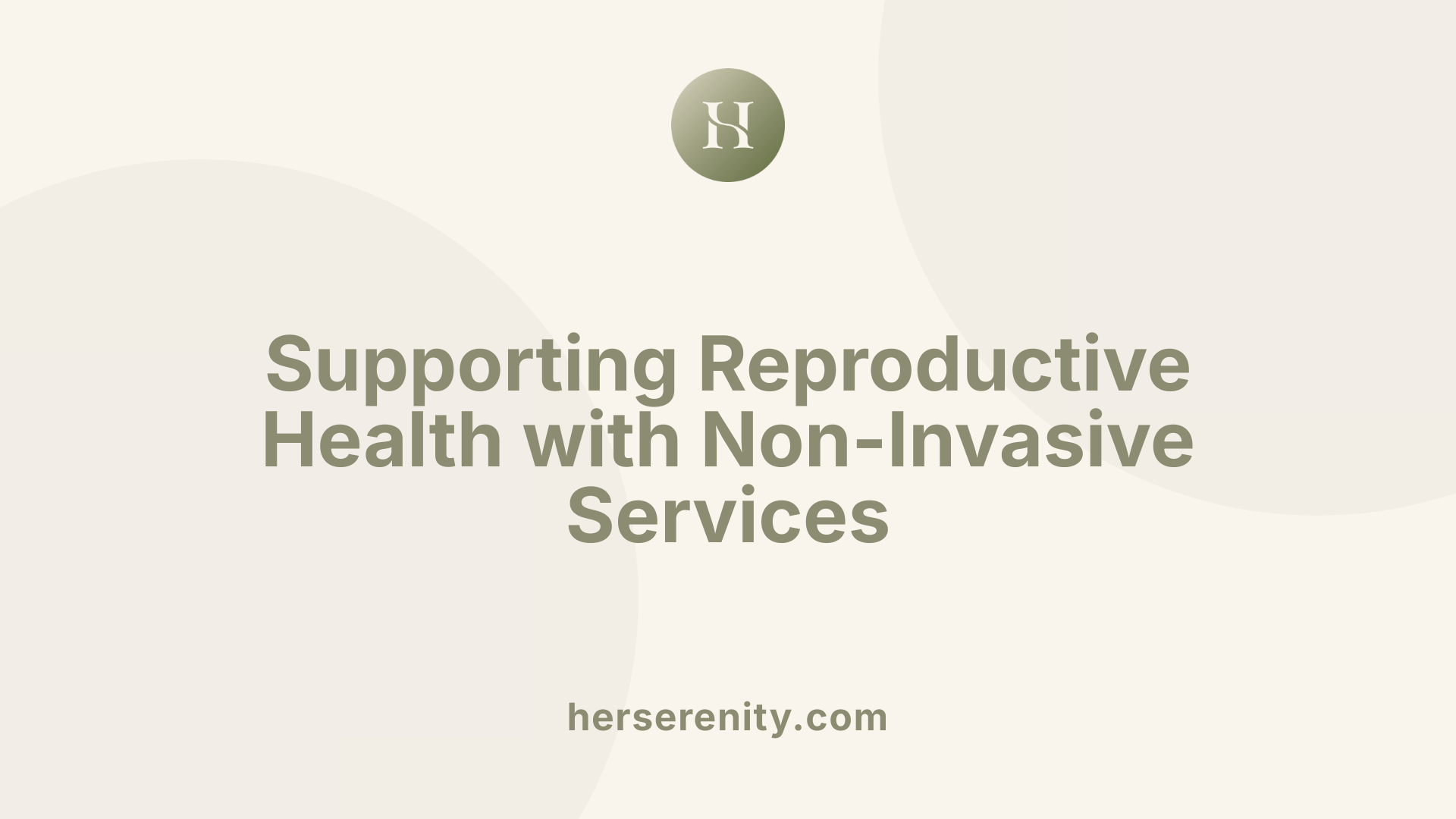
What non-invasive services are available to support reproductive health?
Supporting reproductive health without invasive procedures involves a variety of essential services designed to promote wellness and early detection of potential issues. Routine gynecological screenings such as Pap smears and HPV tests are crucial for the early identification of cervical cancer and other abnormalities. These screenings typically occur as part of an annual wellness exam.
Fertility counseling and lifestyle guidance play a significant role in optimizing reproductive potential. Health professionals offer advice on nutrition, stress management, and exercise tailored to individual needs, helping to prepare the body for conception naturally. Hormonal evaluations and menstrual cycle monitoring provide insights into reproductive endocrine function and help diagnose abnormalities that might impact fertility.
Sexual health management includes addressing concerns like sexual dysfunction and vulvar disorders, often through laboratory testing and non-surgical treatments. Additionally, preventive screenings for sexually transmitted infections (STIs) are regularly integrated into care.
Menopause management is another critical non-invasive service, focusing on symptom relief through lifestyle modifications, medication, and bone density testing to prevent osteoporosis. Altogether, these services aim to maintain reproductive well-being across all life stages, emphasizing prevention, education, and early intervention without surgical or invasive approaches.
Personalized Stimulation Protocols: The Key to IVF Success
Choosing the optimal IVF ovarian stimulation protocol is a nuanced process that balances maximizing egg yield with minimizing risks, tailored to each individual’s unique reproductive profile. From traditional GnRH agonist protocols to antagonist, minimal, and emerging stimulation strategies, reproductive medicine continues to evolve, improving safety, cost-effectiveness, and pregnancy outcomes. A comprehensive understanding of these protocols empowers patients and clinicians to make informed decisions, enhancing the journey toward successful conception and healthy births.
References
- Comparison of different stimulation protocols used in in ...
- Comparison of pregnancy rates for poor responders using ...
- Ovarian stimulation protocols for IVF: is more better than ...
- Ovarian Stimulation Protocols - IVF
- Ovarian Stimulation IVF Protocols Medications and Drugs ...
- Which IVF Protocol is Right for You?
- Treatment for infertility
- Fertility Treatments For Infertility




